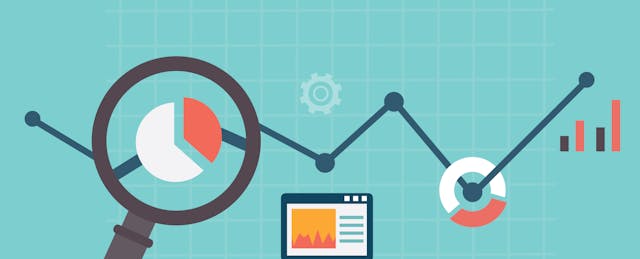The college classroom has been impenetrable for those seeking to understand how students learn. This was more a function of the traditional methods of teaching and learning than a result of any intentional barriers. Student behaviors were fairly opaque—some note taking, possibly classroom discussion and then one or two exams to assess their learning. It was a hard process to get inside.
Education technology has changed that. Colleges now have access to a growing set of data about how students interact with—and learn from—the artifacts of their learning environment. But just as professors aren’t trained to develop curriculum or tests, very few academics understand the new data, let alone know how to sort and sift for insights into how students learn.
Colleges are clearly caught between a fascination with the potential of data analytics and the constraints of finances and internal expertise. This conflict explains why a recent survey by KPMG found that less than half of colleges (41 percent) currently use data for predictive analytics.
The same factors that give rise to new education technology also drive an increasingly complex world continually raising the premium for learning. New analytical tools offer the potential to improve learning and increase the value of education even further. That rising value draws the attention of many new players, including those outside of academia. It should come as no surprise that the arrival of new entrants will spark a debate over who should control the field of learning analytics.
Candace Thille, a widely acknowledged innovator in adaptive learning at Carnegie Mellon and now Stanford, recently cautioned against commercialization and urged colleges to take more control. An executive at a large provider of digital learning tools pushed back against what he saw as Thille’s “complaint about capitalism.”
A debate between academics and entrepreneurial types will definitely trigger a lot of sensitivity to turf and a battle over who is the smartest voice in the room. But given that students and broader societal needs should come first, this discussion needs to be based on those goals and not on the personal preferences of the involved parties.
Here are four key themes that both college leadership and faculty need to address in developing their strategy for learning analytics:
Don’t be an ostrich: There is too much potential to increase the individual and societal benefits provided by higher education to stick your head in the sand. The obligation to be involved is especially significant at the vast majority of U.S. institutions where the record of student success is spotty.
A firm grip can be fatal: Too much control can kill innovation before anyone has a chance to reap its value. Keeping bright people and capable organizations out of this work because they come from the private sector does not make sense. The question of control within a campus is even more important. Learning analytics cannot be left to the researchers, IT leadership, the faculty, the provost or any other single sector alone. Institutions need to figure out how to make this a collegial effort that acknowledges that relevant expertise comes in many forms and is found in many places.
Buyer and user beware: Colleges need to develop their own learning agenda on learning analytics. There’s no solution in a box that lessens your obligation to be deeply engaged in understanding both the analytics and their application to the students you serve. Colleges need to become smart purchasers and users of a complex tool kit. Look at your own track record of purchasing complicated technology tools. If you’re not comfortable with that, you have to figure out how to get much better at this task.
Look for help from your peers across the country: The community colleges and regional universities that serve the majority of American students—and virtually all of our at-risk student population—face a major capabilities gap in expertise in technology and analytics and in the financial resources needed to realize the benefit from learning analytics. But many educators at these institutions know this student population far better than the private sector or university researchers do.
It is not enough for the national experts in private or research sectors to involve our local and regional institutions in their efforts. These colleges and universities need to be leaders in the development of learning analytics. Their expertise in learning environments and student relationships needs to be recognized as even more valuable than the capability to build complex algorithms or data-crunching platforms.
The history at Valencia Community College in Orlando, Florida brings these themes alive. Valencia was one of the first colleges to join Achieving the Dream, the community college network focused on improving student success, and was active in ATD’s data work. Its early commitment gave the time to develop a learning agenda before rushing out to purchase a product.
Valencia learned early on that the “build it and they will come” model doesn’t work for learning analytics. It shifted its work to faculty-driven initiatives. It started an annual five-week summer program for faculty to design new strategies for teaching informed by student data. Valencia partnered with Civitas Learning to bring essential technical and analytical capabilities; and now work with the University of Central Florida to understand the active student pipeline between the two local institutions.
Valencia’s track record and that of other institutions, such as Georgia State, can help every college understand the opportunities created by learning analytics. Both stories also show that this is a more complex process than turning the function over to just one segment of the campus community or to an outside vendor or researcher. All need to be involved to empower colleges and especially their faculty to build a strategy that works for the students they serve.


